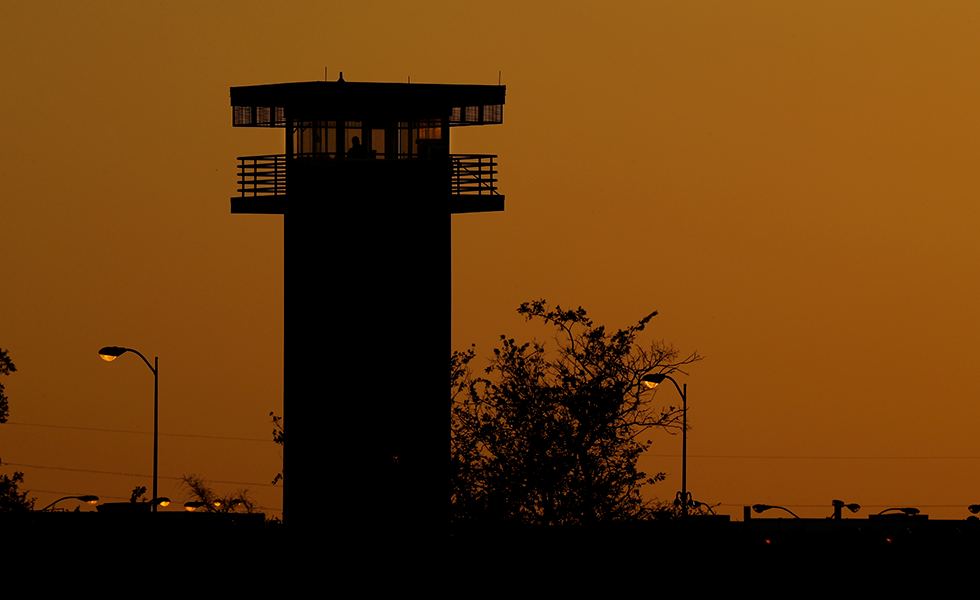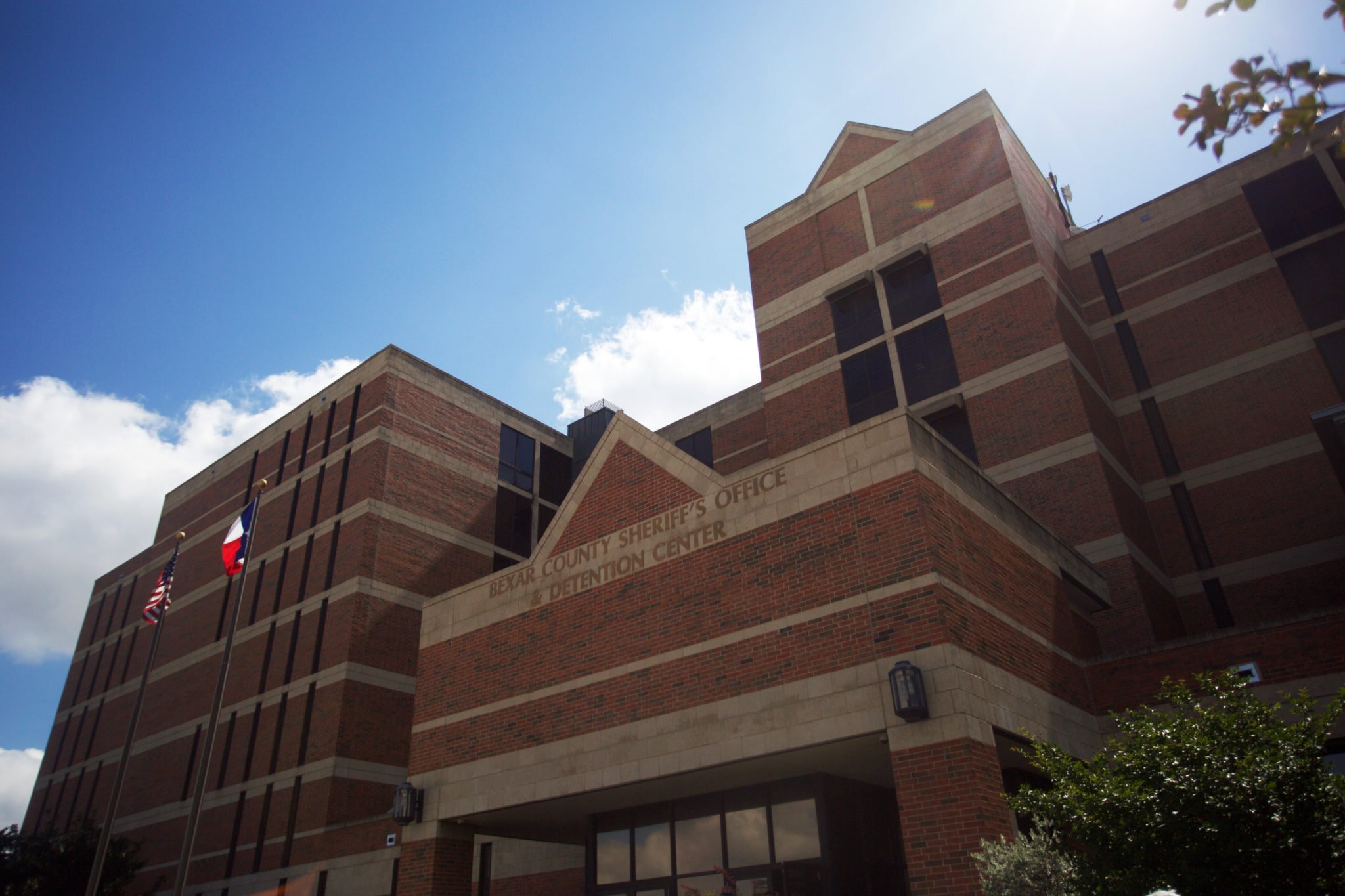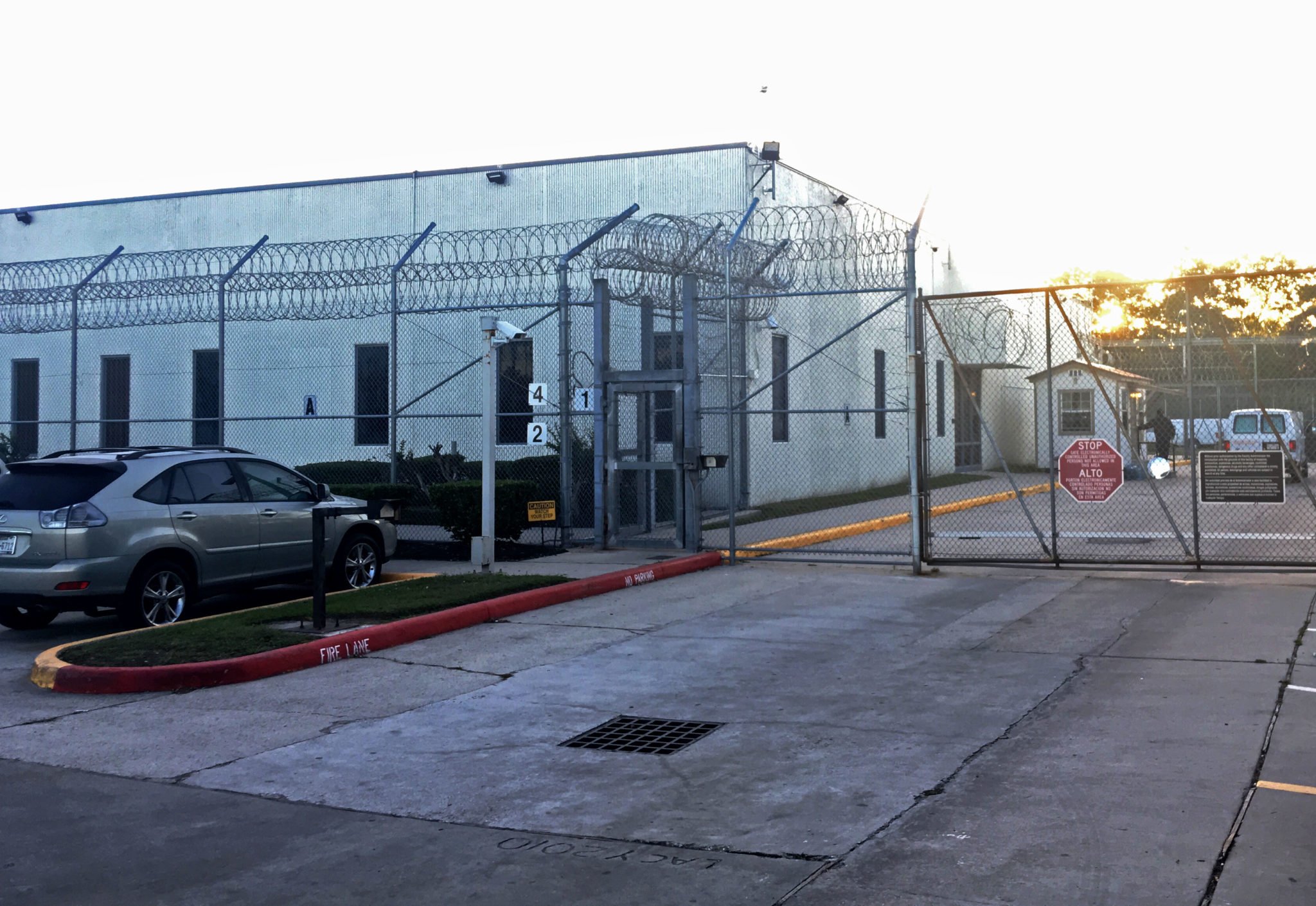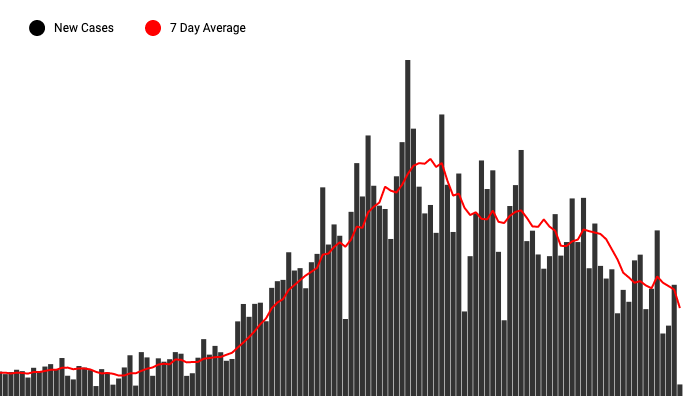
Texas Health Officials Undercount COVID-19 Cases by Excluding Some Prisoners Who Tested Positive
The Observer identified at least nine Texas counties where current prison cases make up more than 10 percent of the total COVID-19 cases in the county.
Above: The William G. McConnell Unit in Beeville at sunset in April 2020. At least one inmate at the Beeville Unit tested positive for COVID-19.
COVID-19 cases have skyrocketed in Texas prisons in recent weeks, with the virus infecting and killing incarcerated people and staff, and likely spreading into nearby communities through the thousands of workers who travel back and forth each day. Yet some confirmed COVID-19 cases in state prisons are being excluded from the Texas health department tally with little explanation from government officials. The reported numbers significantly undercount cases in at least two East Texas counties where the number of positive prison cases have eclipsed the reported county totals severalfold.
In Anderson County, COVID-19 cases in the Beto Unit, one of five state prisons in the county, spiked to over 200 in recent weeks, yet data from the state health department shows just 38 confirmed cases countywide as of Wednesday—many of whom are prison employees, according to a local official. And directly south in Houston County, the Texas Department of State Health Services (DSHS) reported only nine COVID-19 cases, yet 33 prisoners incarcerated in the county’s Eastham Unit currently have the virus, according to the Texas Department of Criminal Justice (TDCJ).
The Observer identified at least nine Texas counties where current prison cases make up more than 10 percent of the total COVID-19 cases in the county. While it’s unclear how many county totals exclude incarcerated people who test positive for COVID-19, the numbers reported by DSHS mask the prevalence of the virus in some rural areas. According to DSHS, jail and prison employees who test positive for COVID-19 are included in case totals for the county where they live, while people who test positive while in jail are counted in their usual county of residence. But when asked about confirmed cases in prisons, DSHS spokesperson Lara Antone wrote in an email that the agency was working with local health departments and prison officials “to ensure that incarcerated COVID-19 positive patients are being accounted for consistently.” She did not say why prison cases would be left out of the county reports.
These exclusions are part of an incomplete patchwork of state data on the spread of COVID-19, even as Governor Greg Abbott accelerates his plan to partially reopen businesses across Texas this month. Public health experts say the totals are likely significant undercounts due to limited testing and reporting lags. Meanwhile, the state has declined to release information on where nursing home outbreaks have occurred, or closely track racial and ethnic disparities in COVID-19 cases and deaths, as other cities and states have done.
“The secret is too big to keep. Let’s get all the information out there.”
Tracking COVID-19 cases across Texas prisons can be especially fraught, as DSHS data includes all confirmed positives since the pandemic began, and TDCJ data only captures case totals at a given point in time at each prison. The TDCJ numbers may fluctuate as people recover or are transferred to other units. In some cases, DSHS data lags behind that collected by counties. Several local officials noted delays in the reporting of prison-based cases by the state health department.
As of Wednesday afternoon, TDCJ reported a total of 1,336 prisoners and 504 employees who have tested positive for coronavirus. Testing behind bars so far has shown a staggeringly higher infection rate than the state overall, according to recent reporting by the Texas Tribune. Dozens of prisoners have been transferred to local hospitals for treatment. Of the 23 infected prisoners who’ve died, several were pronounced dead at hospitals near the prisons where they’d been incarcerated, including in rural Bowie and Jones counties. A TDCJ spokesperson wouldn’t provide the Observer with the names of those hospitals, or the locations of other hospitals where about four dozen prisoners who have tested positive for the virus are currently being treated. At least five TDCJ employees have died as a result of COVID-19.
Local officials are “very concerned” about employees spreading the virus, said Anderson County Judge Robert Johnston, which is why officials pushed for testing staff at the Beto Unit, the epicenter of coronavirus cases. In the first round of testing, he said, 300 guards were tested and 18 were positive. None of the positive cases showed symptoms, “so they wouldn’t have [otherwise] gone and gotten checked,” he said. “But they still would’ve gone home and given it to their families, and gone to grocery stores, not knowing that they have the virus.”
Yet Johnston hesitated when asked whether prison cases should be included in the county total, then said no. Because including them “makes it look worse than what it actually is in Anderson County,” he said. “Those people aren’t out walking the streets. So I understand why they’re keeping them as a group,” he said of state officials.
Meanwhile, Houston County’s emergency management coordinator Roger Dickey said he doesn’t understand why prisoner numbers aren’t included in his county’s totals. He wants residents to know that corrections officers who likely had contact with those prisoners have probably visited Houston County’s stores. “The secret is too big to keep,” he said. “Let’s get all the information out there.”
Prisoners make up the vast majority of confirmed cases in some other counties where they are included in health department data. In Walker County, 204 of the county’s 332 cases are prisoners, according to the county’s data as of May 7. In Jones County, most or all of the confirmed cases are from the prisons and the ICE detention center, the county judge said last week. In Coryell County, prisoners account for 133 of 180 confirmed cases as of Tuesday, according to the county’s emergency manager.
Prisoners make up the vast majority of confirmed cases in some other counties where they are included in health department data.
Prisoners with coronavirus currently make up about 30 percent of all cases in Brazoria County and are included in county and state data. “With almost 9,000 inmates that take over 2,400 employees in Brazoria County to service the prisons, the presence of COVID-19 in TDCJ has an effect on the community, and the public needs to know and understand what is happening in their backyard,” said Brazoria County Judge Matt Sebesta, who last month blasted prison officials for “surreptitiously” transferring prisoners with COVID-19 to local lockups.
People incarcerated by the TDCJ and corrections officers who work behind bars claim the agency’s efforts to prevent the spread of coronavirus have been grossly inadequate. Prisoners and inmate family groups worry about officers who work at facilities with coronavirus cases, yet continue to also work at prisons without any reported cases. Corrections officers, who accuse the agency of failing to provide them with the necessary protective equipment, say such transfers are inevitable amid a staffing crunch that predated the pandemic.
“It is a big concern,” said Jeff Ormsby, the Texas corrections leader for the American Federation of State, County and Municipal Employees. “They’re going from a unit where there’s no positive cases to units where there [are] positive cases. That’s why we’ve asked TDCJ to be proactive on testing all of our staff, on a regular basis, not just once.”
Johnston, the Anderson County judge, said he’s asked TDCJ not to transfer corrections officers between prisons at the moment, but that the agency told him it would move people around as needed. Dickey, too, is concerned that TDCJ has continued to transfer officers between prisons in Houston and Anderson counties. “Here we are all social isolating, and it almost seems like [TDCJ officials] were a little behind the eight ball on that,” he said. “I have friends that work in [prison units] that thought, ‘Man this is crazy. They need to stop moving people around.’”
While not all Texas prisoners with coronavirus count in the state’s total case numbers, the U.S. Census does count them as residents of wherever they’re incarcerated when it comes to drawing political lines, even though they can’t vote for their representatives. Doug Smith, a lead policy analyst at the Texas Criminal Justice Coalition who was formerly incarcerated, said he wasn’t surprised some officials wouldn’t want prisoners included in local case tallies. “They already don’t count in a lot of ways.”
Find all of our coronavirus coverage here.
Read more from the Observer:
-
The Disappeared: Genetic genealogy is helping to crack cold cases and identify victims left nameless for decades. The process is surprisingly effective—and controversial.
-
Will Grocery Workers Still Be ‘Heroes’ When COVID-19 Subsides?: In Texas, grocery employees labor for low wages and few benefits. Now they’re part of a nationwide struggle in which workers are fighting for their lives.
-
Demand for Plasma Therapy for the Sickest COVID-19 Patients Far Outpaces Donations: Texas blood banks and the Red Cross are actively recruiting donors but remain thwarted by a lack of antibody tests.


